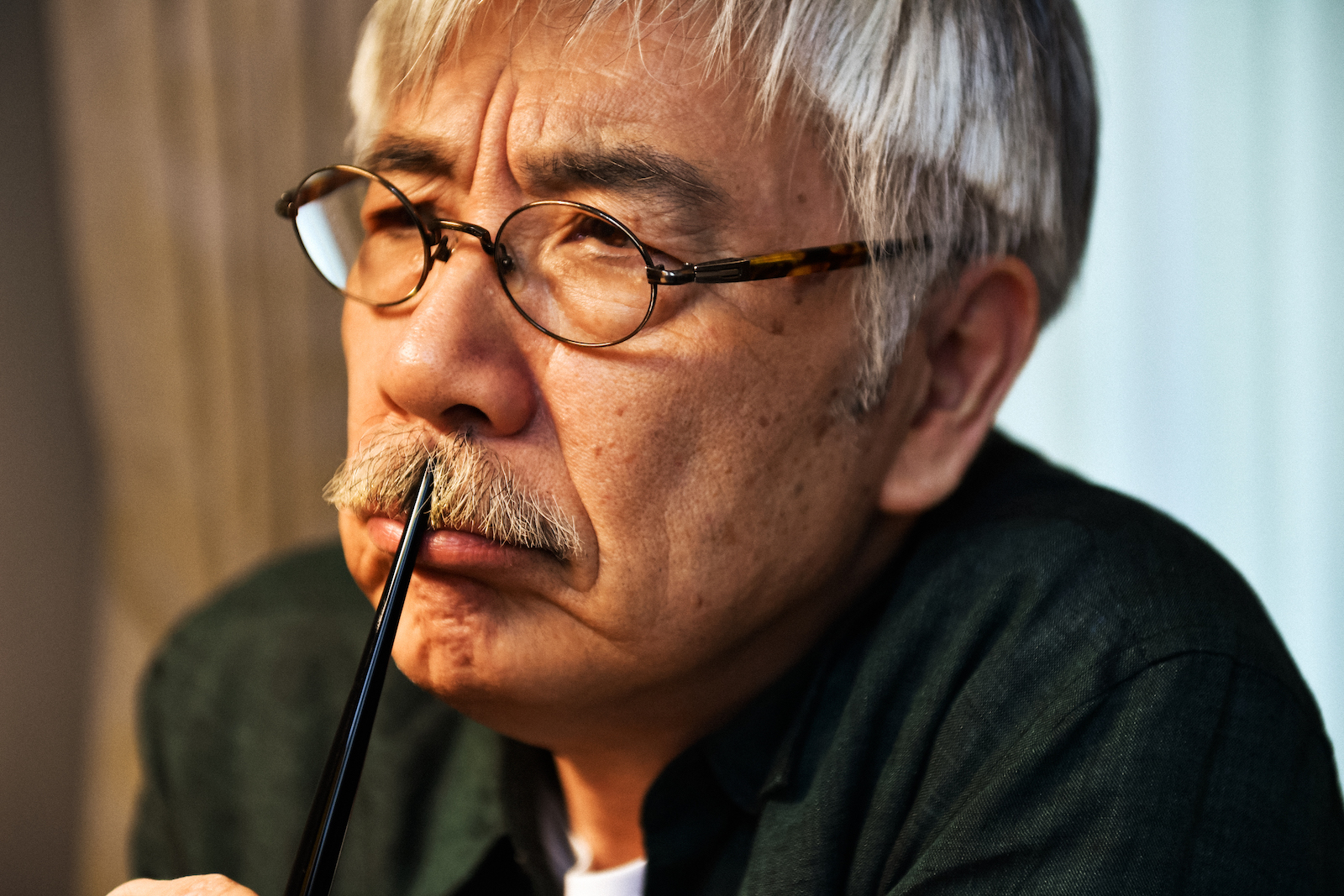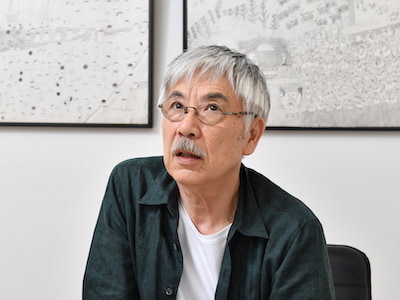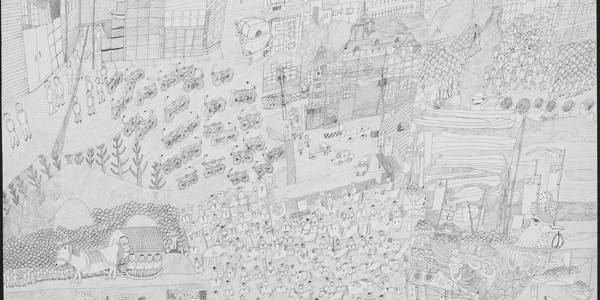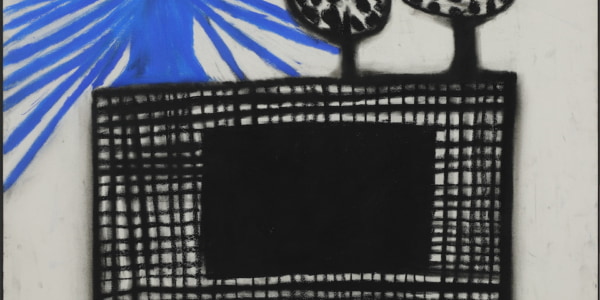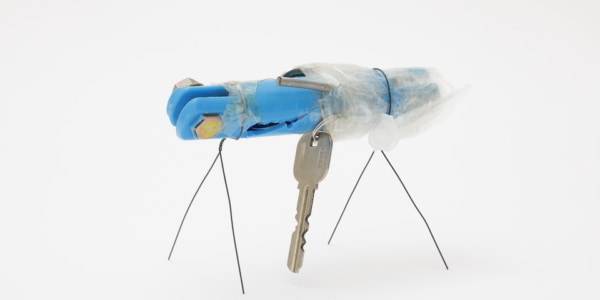Co-starring
SHIGA Toshihiko (1958-2013)
Shiga was born in Kyoto Prefecture. After entering〈Shigaraki Seinenryo〉 in 1976, he assembled hinges before starting to paint in the center’s Modeling Group around the middle of 1990. He often draws with ink using a chopstick pen (a common technique which involves dipping the sharp end of a chopstick in ink and using it like a pen), creating face-like depictions as well as things which look like elongated torsos extending from these on drawing paper. Exactly what he is drawing is not certain, but the natural balance of space in his works expresses a unique perspective. He continues to exhibit in a variety of events in various locations.
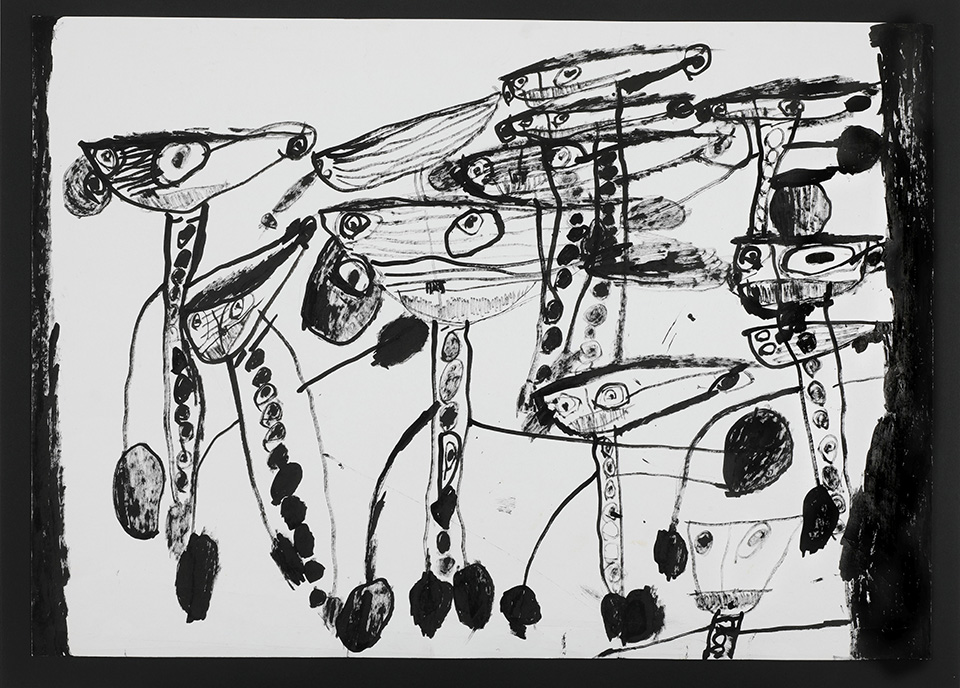
“Untitled” / 543×766mm / Ink on paper / 1996-2001 / Collection of The Nippon Foundation
This is quite remarkable. There is power in this picture.
Looking at it, the phrase “the mechanism which moves the human heart” springs to mind.
Our hearts move. This picture represents why the heart moves, and that this is how it moves. This happens, then this happens, then this happens and it moves. This part here and that part their go round and round. Like that.
This drawing is one which requires you to look at each individual part in detail and analyze it.
It’s like math. In mathematics, there are so-called problems of the century where you hear about “such and such prediction has been proven” or “such and such problem has been solved.” There is a similarly difficult problem in the world of psychology: “how the human heart moves.” This is truly a perplexing problem. And one of the students of the philosopher NISHIDA Kitaro tried to solve it.
Nishida’s philosophy touted the concept of subject-object undifferentiation. It did not differentiate between the subject and the object.* He believed that the state prior to these being split into two parts was one of “pure experience.” This is a true story.
But dreams are a world without solid shape, and while the story I’m telling is actually a wild imagining, he, too, may have thought his dream was just a wild imagining. And grabbing a pencil, thinking maybe it looked something like this, he tried to draw what he saw in his dream.
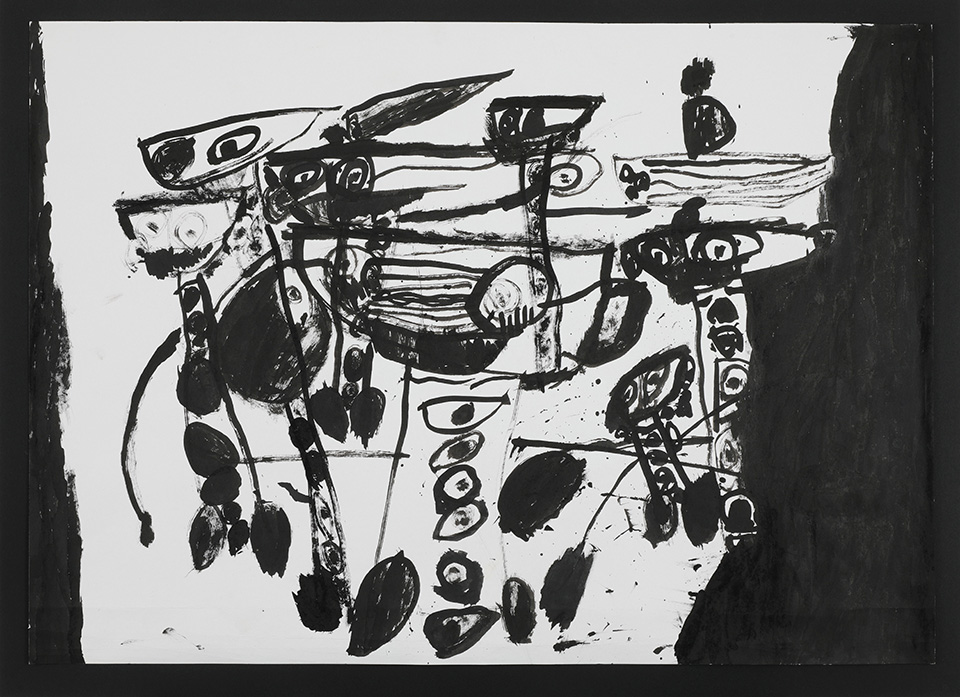
“Untitled” / 543×766mm / Ink on paper / 1996-2001 / Collection of The Nippon Foundation
But he still wasn’t absolutely certain how this functioned as the mechanism which moves the human heart. Because he had moved the pencil in his hand while in a daze to draw what he saw, like automatic writing. And when he came back to his senses, he didn’t understand what he had drawn. I think that because he was thinking about pure experience, pure experience, over and over in his head, what he saw was the true state of his own heart, what his heart really looked like, and the traces of the pure workings of the heart, and drew those workings on paper.
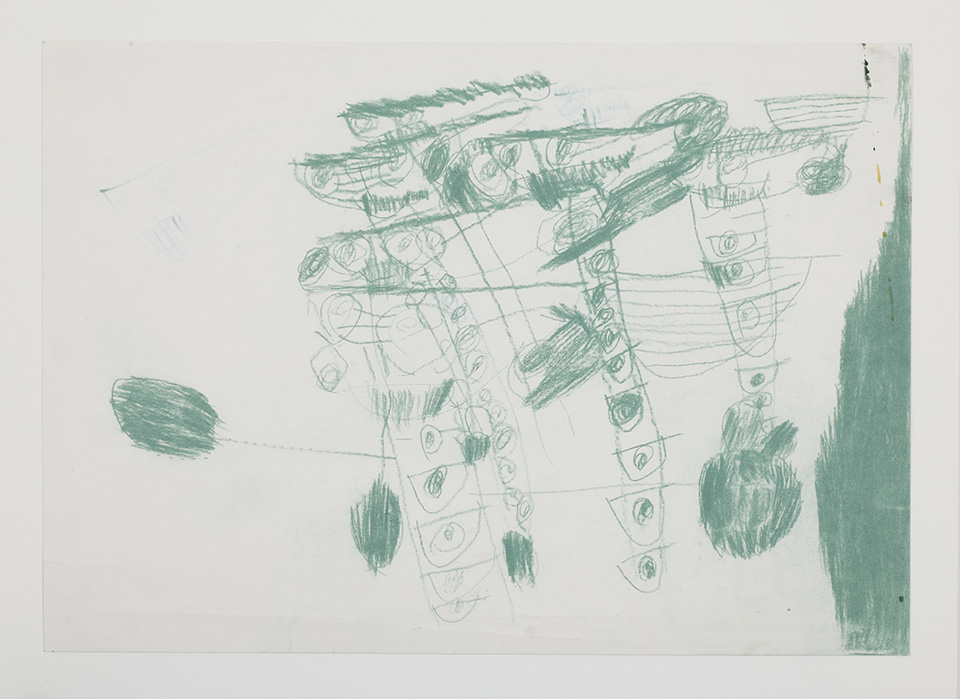
“Untitled” / 381×540mm / Conté and water-based pen on paper / 2001-2007 / Collection of The Nippon Foundation
Why he used green I don’t know, but I think he wanted to use a filter because he felt there were some things he couldn’t see clearly without one. He was experimenting in the dream. And… There was nothing. It just made everything look green.
Even so, he remained certain that what he had seen was definitely pure experience. The problem was figuring out just what he had seen through this pure experience. That still wasn’t clear.
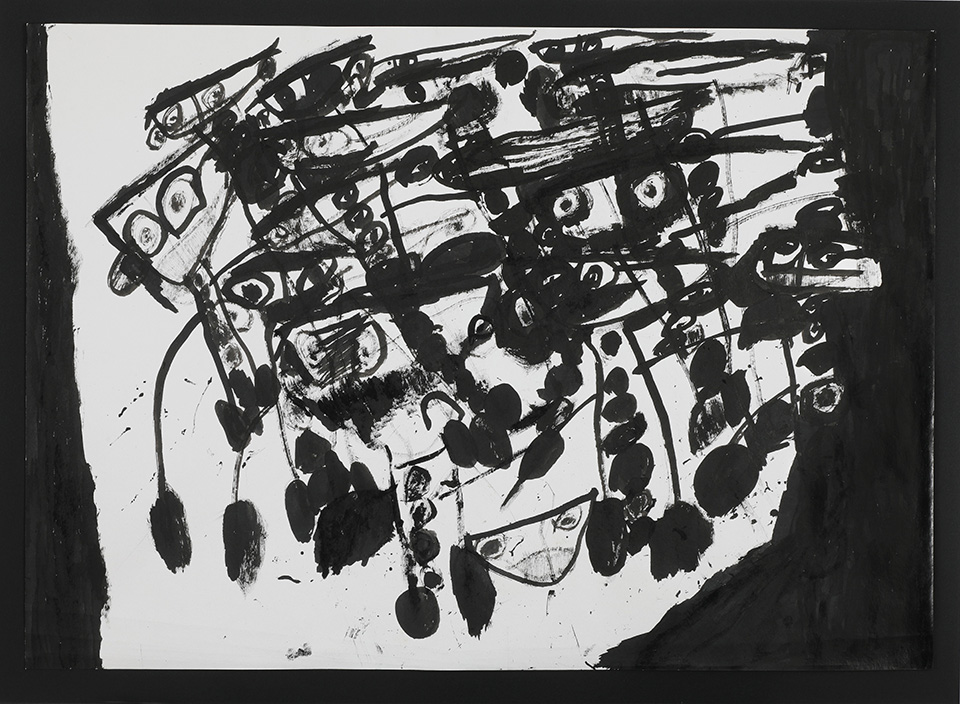
“Untitled” / 542×766mm / Ink on paper / 1996-2001 / Collection of The Nippon Foundation
Well, he thought, it looks like there is more entropy.
It’s chaos. And it’s growing.
There were things spinning, and swinging like a mobile, and jumping our irregularly. He found something moving chaotically.
And seeing this state, he became convinced. This is definitely working. This must be the mechanism which moves the human heart.
The heart doesn’t stand still. The heart is something which moves, isn’t it? And so this picture, too, is accurate. And the man was convinced that this truly was the workings of the mechanism of pure experience, that he had finally perceived it.
That being said, he had still only seen the workings of his own heart. Deciding to try to see someone else’s heart, he next travelled to America. And there he entered the dream of an American. Because he understood the mechanism behind pure experience, he could enter another person’s dream. And when he did, he saw things which looked like ears of grain. They were wheat ears.
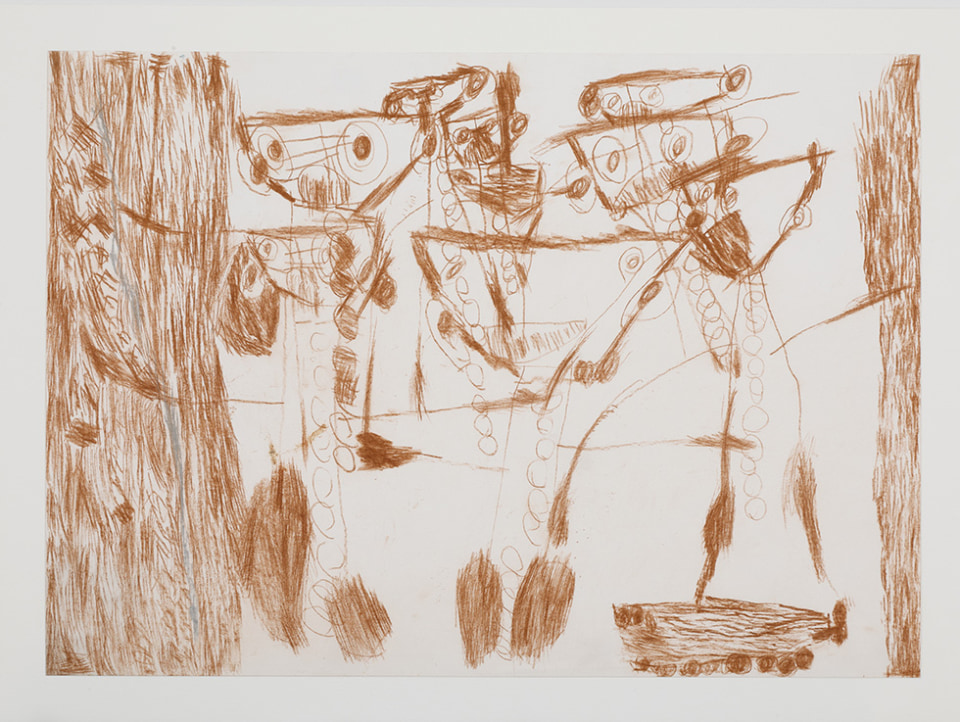
“Untitled” / 386×540mm / Conté on paper / 2001-2007 / Collection of The Nippon Foundation
America is a nation of immigrants. There are many different people there but they share one thing in common. They eat bread. Bread is what fuels them! So it stands to reason.
Now looking back at the first drawing he made of his own heart, he realizes that in his drawing, there is not wheat but things which look like the ears of rice plants. He thinks, ah, I see, I eat rice, not bread, and so there are rice plants.
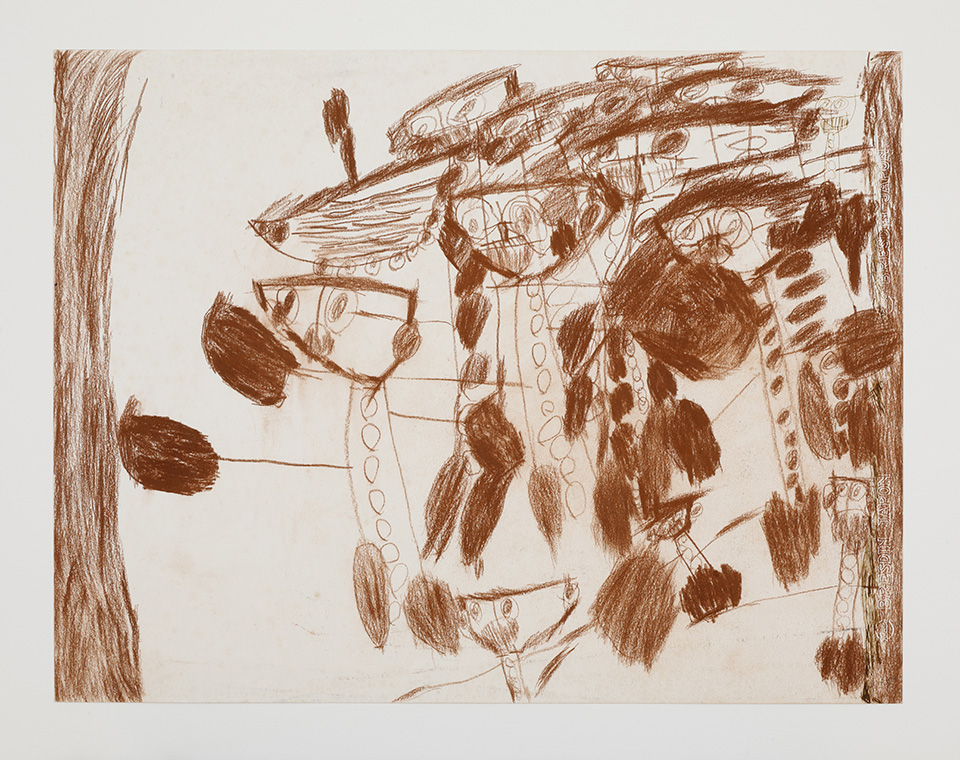
“Untitled” / 503×654mm / Conté and water-based pen on paper / 1996-2001 / Collection of The Nippon Foundation
These are also the ears of some kind of grain. I wonder what kind. They are not wheat, but they are definitely some kind of grain. And that’s where he figures it out. Around the world, grains are the food which move the human heart.
Grains do not merely satisfy hunger on a physical level, they are also sustenance for the heart itself. Rice and wheat and other staple grains.
However, you can’t actually see this mechanism working with your eyes; these pictures are only illustrative models. The man, a student of NISHIDA Kitaro, perceived the mechanism which moves the human heart, but he didn’t prove it. Whether there really was something like this inside of every human being.
His idea doesn’t stand up to any such scrutiny. Thinking, however, that in the near future, these sketches could become a preliminary study for proving his theory, he remains hard at work, continuing to draw what he sees in dreams.
Issey Ogata’s Wildly Imaginative Art Appreciation Techniques
As actor, playwright, and director of his one-man show, Issey Ogata brings new worlds to life every day. We asked him for tips on having fun with the power of unfettered imagination.
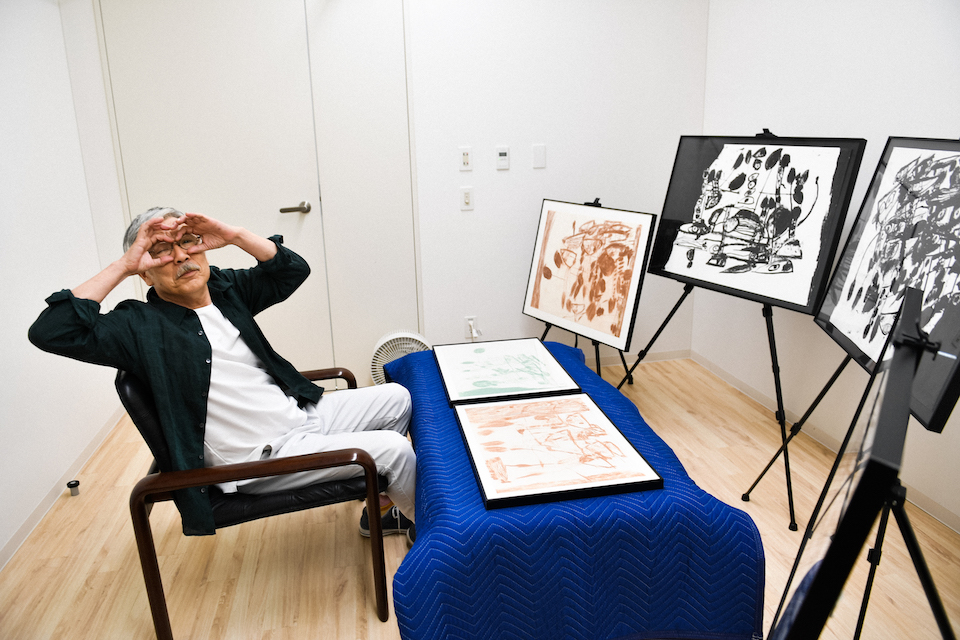
Inspiration is a part of our lives. And from numerous moments of inspiration, wild imaginings can emerge.
The unfettered imagination I talk about is 80% things I have thought up and 20% improvisation.
It is impossible for people, you know, to do to the same thing every time. There’s some kind of mechanism at work. I believe there is a mechanism which gives birth to inspiration.
Inspiration may feel like something special, but human beings can only live through inspiration. They have moments of inspiration and they live.
“I think I’ll pop out here and take a right, or maybe take a left.”
“Maybe I’ll fire that guy, or maybe not. What shall I do?”
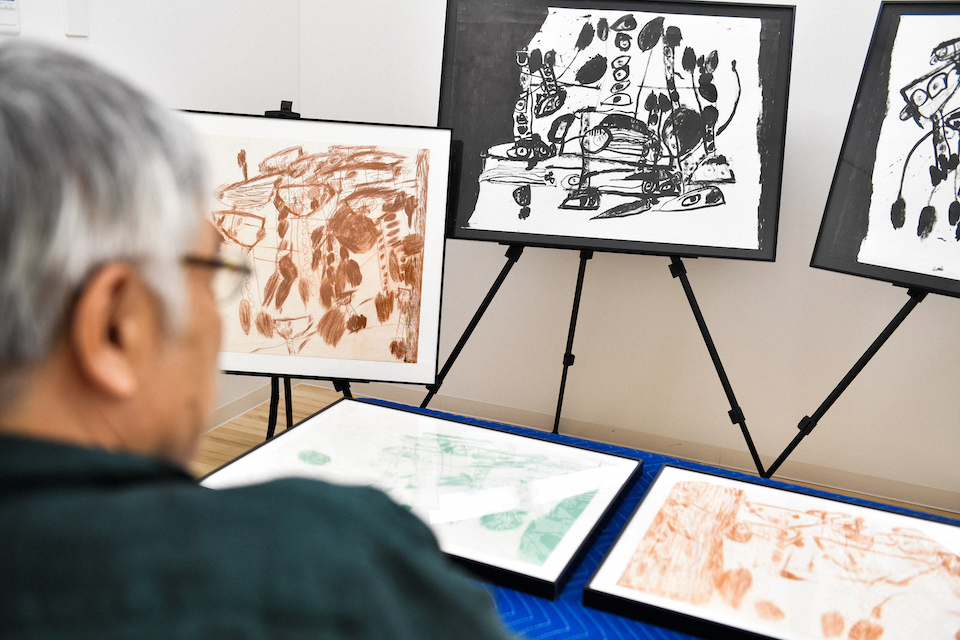
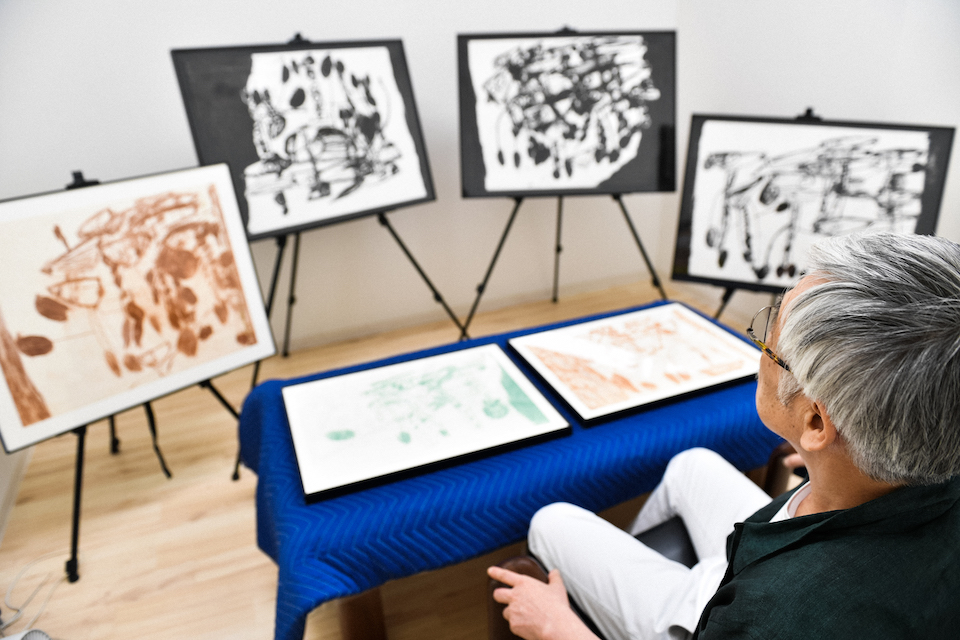
And yet, even though you’re following the same script, the play still changes day to day. The nuances and inspirations change each time. The freedom of not being bound by anything. You know when a dump truck turns and a recording announces, “Attention, this vehicle is turning left” in the same tone every time? Now there’s something so lacking in inspiration, it’s sad, haha.
Unfettered imagination is also a kind of inspiration.
Or perhaps I should say inspiration without limits is unfettered imagination.
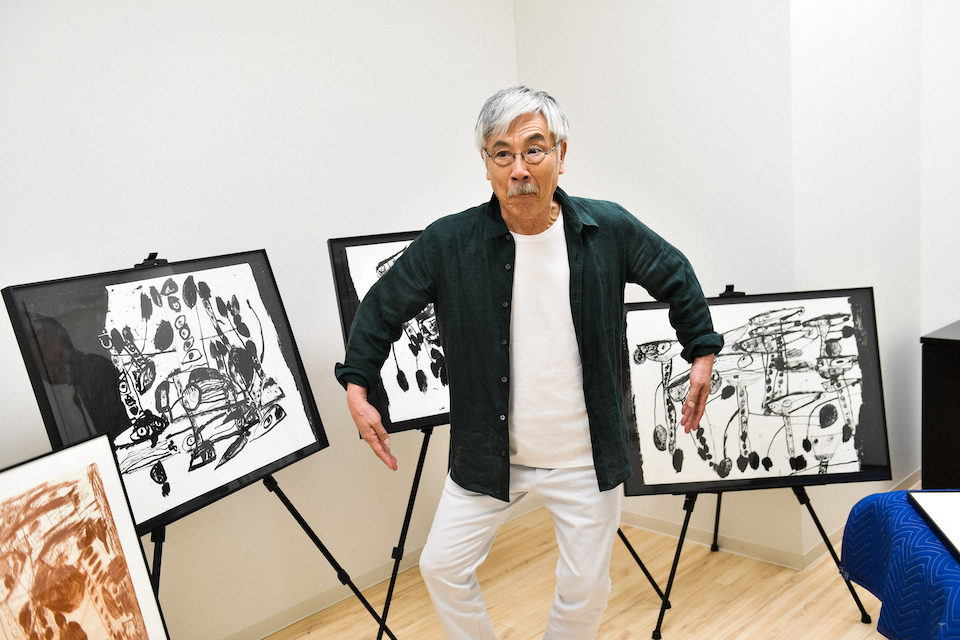
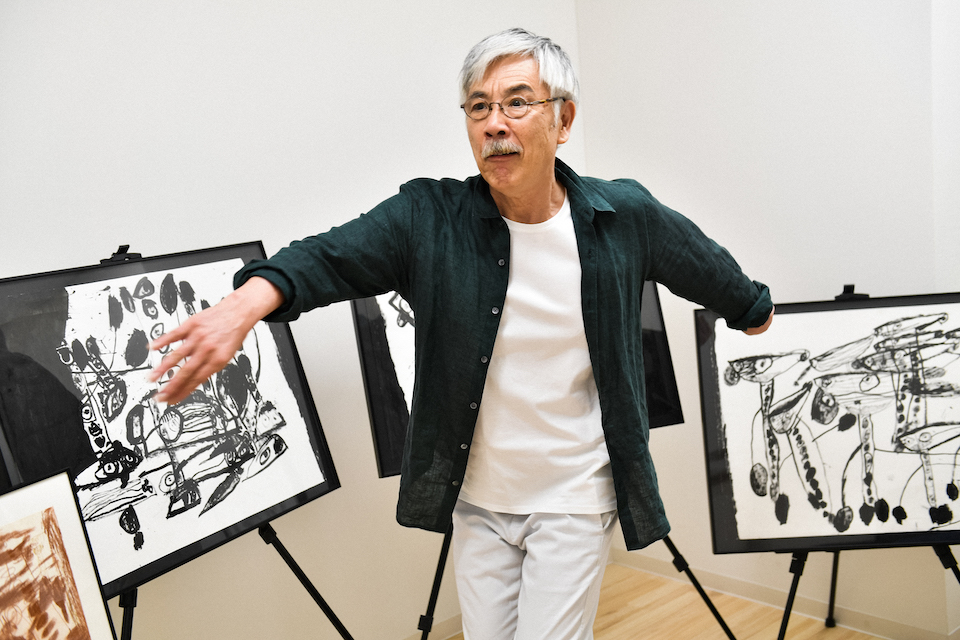
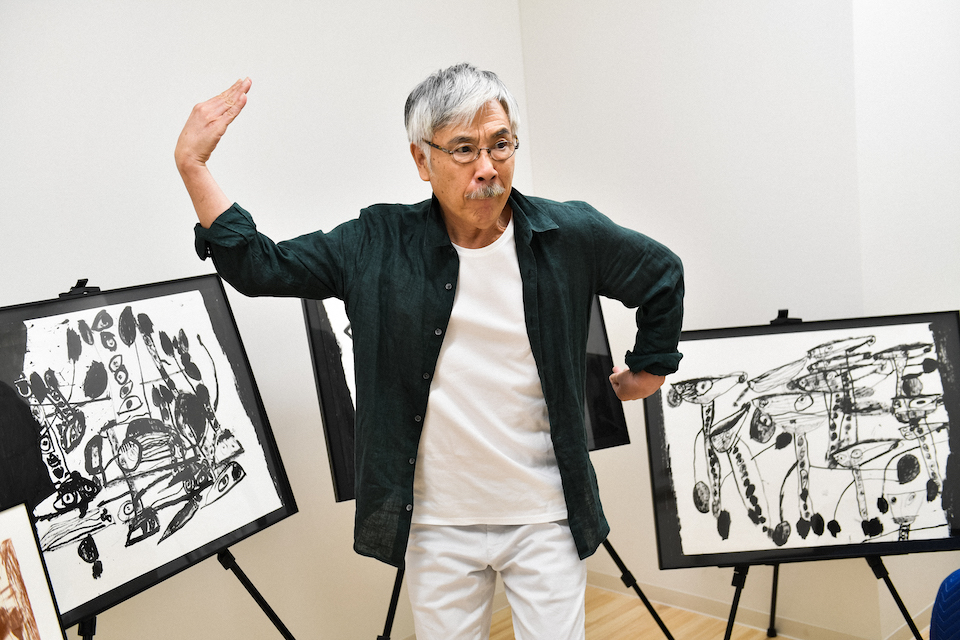
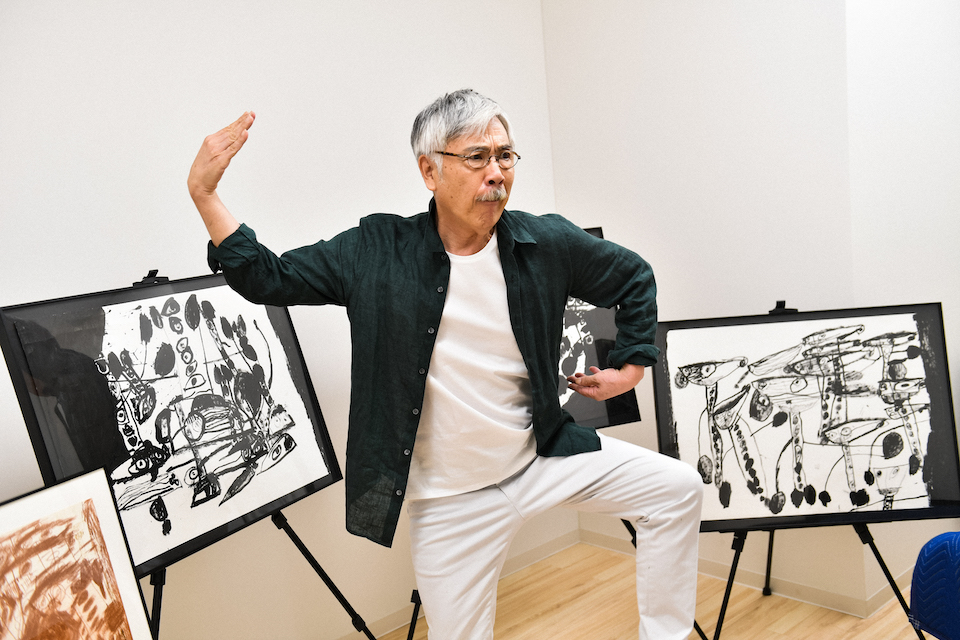
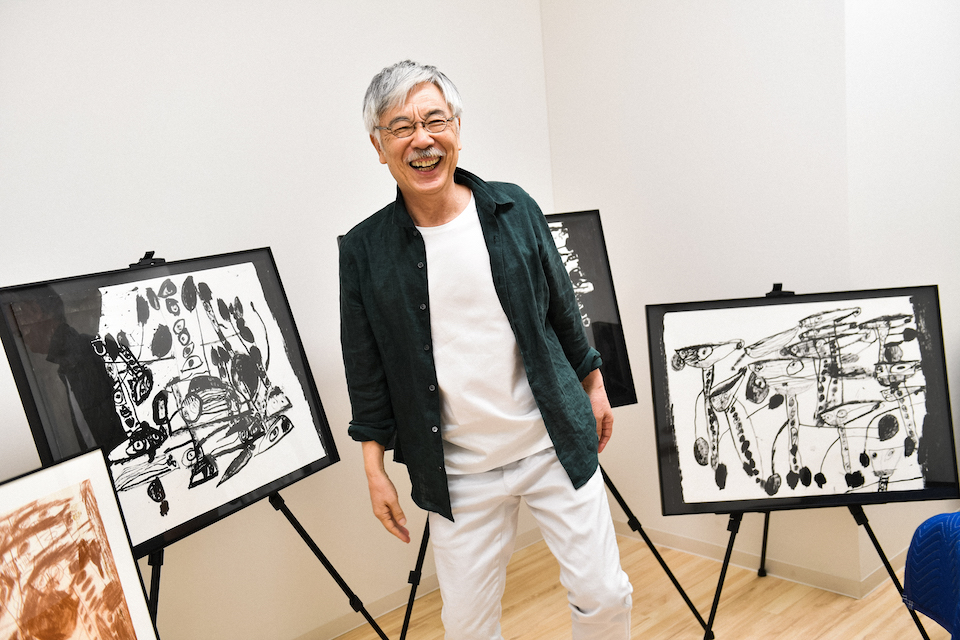
[Corporation] HILLTOP HOTEL




